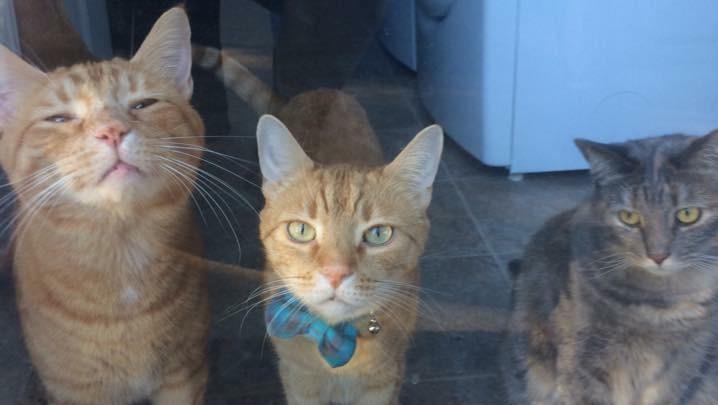Urine Marking in Dogs and Cats

- posted: May 08, 2021
Urine Marking in Dogs and Cats
Urine marking is a frustrating problem that can occur in both dogs and cats. Why do our pets do this and what can be done to stop this behavior?
Urine marking is more common in intact (non-neutered/unspayed) dogs and cats and more frequently occurs in males but some females mark too. When pets urinate on objects indoors or out, they are leaving scent clues that state that the area marked is part of their territory. Urine marking can also be triggered by changes such as moving furniture, bringing a new pet or baby into the house, or visiting a new house with your pet as well as when there is conflict between pets in a household. In most cases, the pet will urinate on a vertical surface or may urinate on a new object in the house. Pets may also mark with urine due to hormonal influences and sexual arousal. Cats may mark if there are not enough litter pans, if they do not like the type of cat litter or if they do not get along with other cats in a multi-cat household or if they see stray cats outside the home.
What can be done to control urine marking? Spaying or neutering your pet is likely to reduce or eliminate urine marking. However, the longer the behavior has been present, the less likely surgery alone is to resolve the issue.
Clean any areas your pet has marked with a product specifically designed to remove urine odors. Bleach, ammonia and vinegar can mimic urine odors and do not break down the proteins in urine so pets may be attracted back to areas cleaned with these types of solutions. Keep your pet with you in the house at all times even if that means keeping him or her on a leash in the house. This will prevent your dog from having access to areas of the house where he may be unsupervised. Consider crating or confining your pet if she cannot be supervised or when you are not at home.
Keep litter pans cleaned daily and do not change the type of cat litter used. Finally, reward your pet when he or she goes to the bathroom outside or uses the litter pan to reinforce urination in appropriate places. Make sure both dogs and cats have enough resources, exercise and environmental stimulation.
If you suspect your pet is urinating in the house due to underlying anxiety, talk to your veterinarian about pheromone products like Adaptil or Feliway that can alleviate stress or even medications to help control anxiety and reduce urine marking. If you are unsure if your pet has an underlying medical reason such as a urinary tract infection which may lead to urination in the house, have your pet seen by your vet.
If you catch your pet in the act of urinating in the house, resist the urge to yell at or punish your pet and never, ever hit your pet or rub his nose in the urine. It’s easy to get angry, but it serves no purpose to punish your pet and may heighten fear and anxiety which may actually worsen urine marking. You can interrupt the behavior and you should take your pet immediately outside or to a litter pan if she is urinating where she shouldn’t.
Urine marking is a frustrating behavior most commonly seen in intact male dogs and cats. Neutering can reduce this behavior as can training, using urine odor eliminators and using supplements and medications. Check with your veterinarian for solutions to urine marking if your pet is exhibiting this behavior.
This blog brought to you by the Patton Veterinary Hospital serving Red Lion, York and the surrounding communities.
https://vcahospitals.com/know-your-pet/dog-behavior-problems-marking-behavior
https://www.aspca.org/pet-care/cat-care/common-cat-behavior-issues/urine-marking-cats
Location
Patton Veterinary Hospital
425 E Broadway
Red Lion, PA 17356
